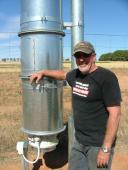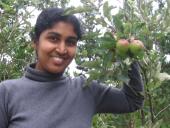Active
This project will investigate the phylogeny, pathogenicity and epidemiology of potato spindle tuber viroid (PSTVd) and related pospiviroids in Australia.
What is the biosecurity problem?
Since 2001 there have been six reported incursions of PSTVd in tomatoes in Australia. In each instance, an intense eradication program has successfully removed the source of inoculum. As a result of these successful eradication programs PSTVd is still considered a quarantine pest of significance in Australia.
It is critically important to Australian horticulture, particularly the potato industry, that Australia remains free of this destructive pathogen. An investigation into the potential entry pathways of PSTVd in tomatoes is therefore required.
Recent research in Europe has suggested that PSTVd infection may be widespread in certain wild solanaceous hosts, and that these infection reservoirs rather than seed transmissions in tomato may be responsible for outbreaks in tomato in different parts of the world. Recent research in Western Australia also suggests that certain wild non-solanaceous hosts may be involved.
The main outputs of this project are to?
- identify the strains of PSTVd and related pospiviroids that are associated with tomatoes in Australia
- assess the pathogenicity of isolates of PSTVd and related pospiviroids found in Australia on tomato and potato
- identify alternative hosts of PSTVd and the role they play in the emergence of PSTVd incursions in tomatoes in Australia
- evaluate the dynamics of PSTVd epidemics in the field, how contact transmission occurs, and the survival of its infectivity on different surfaces and the role of nurseries as potential reservoirs
- determine what types of scientific data are required to support import risk assessments of solanaceous plant products into Australia
- revise containment and eradication strategies for this harmful pests and diseases, and
- train a post graduate student in Plant Virology (viroids) and Plant Biosecurity.
Who will be the end-users of your research?
Office of the Chief Plant Protection Officer, Biosecurity Australia, Plant Health Australia, state and territory department of primary industries, vegetable industries.
STUDENT

Ms Alison Mackie
Student CRC60134: Potato Spindle Tuber Viroid - PhD
amackie@agric.wa.gov.au
Phone: 08 9956 3327
Fax: 08 9941 8334
Read More
PROJECT DETAILS
Active
Supervisor
Professor Martin Barbetti (UWA), Adjunct Professor Roger Jones (DAFWA), Dr Brendan Rodoni (VicDPI) and Dr Simon McKirdy (CRCNPB)
Supervising Institution
University Western Australia
Term
July 2009 – June 2012
LOCATION
Wheat stripe rust (Puccinia striiformis f. sp. tritici (Pst)) is listed as a bioterrorism threat to U.S. agriculture in the Bioterrorism Preparedness and Response Act of 2002 and was even developed, along with wheat leaf rust, by the USSR as a bio-warfare weapon (Bruce, Fink, & Lander, 2003). Wheat stripe rust is an important disease in all wheat growing regions of temperate-cold climates. It has been reported in over 60 countries (Chen, 2005) and is the second most important disease of wheat in Australia, causing an estimated $127 million in losses annually. Barley grass stripe rust (Psp-h), Cocksfoot stripe rust (Psd) and Kentucky Bluegrass Stripe Rust (Psp) are also present in Australia.
Variation in Pst in Australia has been largely observed in rust surveys based on host disease response with limited molecular studies. Simple Sequence Repeats (SSRs), also known as microsatellites, have shown some potential to reveal more information than other molecular markers in studies of Pst (Keiper et al., 2003, Spackman et al. 2010, Zhan et al. 2012). The range of SSR markers described to date ( Enjalbert et al., 2002, Bahri et al., 2009, Chen et al., 2009) have been of some value in illustrating contrasts between geographically separated Pst populations. However there is a need to develop a greater range of polymorphic SSRs that enable an expansion in studies between and within the variants of P. striiformis, including formae specilaes and pathotypes. The recent publication of the Pst genome (Cantu et al., 2011) provides an opportunity to develop an expanded range of SSR markers and to screen these on Australian isolates of P. striiformis. The development of a new suite of SSRs would have the potential to reveal insights into the evolutionary history of Pst within Australia as well as the mechanisms underlying pathogenic variability detected in the Pst population.
What is the biosecurity problem?
Rapid identification of unknown Puccinia striiformis. The known incursion events in Australia, and worldwide, demonstrate the ease with which pathogens, and new pathotypes, can be introduced into agroecosystems. Even with improved quarantine and biosecurity measures there is still the risk that further incursions may occur. With host boundaries between formae speciales of Puccinia striiformis being somewhat blurred and Barley Stripe Rust being considered a high risk pathogen to Australia (Spackman et al. 2010), a molecular based identification protocol would be very valuable.
The outputs of this project are to:
- Develop a diagnostic protocol for the rapid identification of potential foreign rust pathogens.
- Conduct a comprehensive analysis of molecular features of the Pst population in Australia.
- Assess the relationship between Pst and wild barley grass species. Wild barley grass identified as an ancillary host to Pst as well as the principal host of Psp-h .
STUDENT
PROJECT DETAILS
Active
Supervisor
Dr Colin Wellings (Plant Breeding Institute)
Supervising Institution
The University of Sydney
Term
July 2009 - July 2012
LOCATION
This project will trace all the costs included in transporting grains from farms to the Kwinana region. This will be done through a mathematical model that will also include the possibility of emergence of phosphine resistance through out the grains’ journey.
What is the biosecurity problem?
Emergence of phosphine resistance during transporting or storing of grains.
The main outputs of this project are to:
- evaluate a new-built surveillance program developed to improve market access for biosecurity research
- improve industrial decisions based on a new complete surveillance program, and
- improve Australia’s biosecurity outcomes as a result of a complete surveillance program that could be used to lower the losses result from pest attack.
Who will be the end-users of this research?
Research field, industry, farmers and Western Australia (in terms of increasing its exports).
STUDENT
Mrs Hoda Abougamos
Student CRC60131: Economic Analysis of Surveillance - PhD
hoda.ragab@gmail.com
Phone: 0864884633
Read More
PROJECT DETAILS
Active
Supervisor
Dr Ben White (University of Western Australia) and Dr Ern Kostas (Co-operative Bulk Handling Limited)
Supervising Institution
University of Western Australia
Term
January 2009 - December 2011
LOCATION
This project will increase our understanding of the Luteoviruses that threaten the Australian pulse industry and provide improved tools to pulse breeders for the generation of robust resistance traits in new breeding lines.
What is the biosecurity problem?
Luteoviridae viruses cause economically important diseases of pulses worldwide, in some instances resulting in up to 95% crop losses. In northern New South Wales, diseases associated with Bean Leafroll Virus (BLRV) are widespread, causing significant crop losses on an annual basis. Some of the most destructive and significant yield losses occur in the central west Asia and north African (CWANA) region.
Current pulse breeding programs in Australia include the development of resistance genes to Luteoviruses such as BLRV. This strategy is presently compromised due to poorly characterised virus isolates and the emergence of new, uncharacterised Luteoviruses in the CWANA region that infect pulse crops. These newly emergent viruses pose considerable risks to current disease resistance strategies; due to the unclear nature with which harmful pests and diseases interact with existing virus resistance genes used in pulse breeding programs. Diagnostic techniques which fail to detect these key viral plant pathogens, or which generate ambiguous test results, have important consequences for international virus resistance breeding programs.
The outputs of this project are to:
Provide an internationally recognised protocol for definitive identification of Luteovirids, strengthening international collaborative resistant germplasm breeding programs.
Who will be the end-user of this research?
Plant virus researchers, quarantine, plant virus diagnostic laboratories and virus resistant germplasm breeding programs.


STUDENT

Miss Mai Hlaing Loh
Student CRC60040: Luteovirus - PhD
maihlaing_loh@yahoo.com
Fax: 03 9800 3521
Read More
PROJECT DETAILS
Active
Supervisor
Dr Brendan Rodoni (Department of Primary Industries, Victoria) and Dr Rebecca Ford (University of Melbourne)
Supervising Institution
Department of Primary Industries Knoxfield
Term
March 2007 – March 2010
LOCATION
This project will help increase understanding of the taxonomy and systematics of a subfamily of leafhoppers in Australia, known as Macropsinae (Hemiptera: Cicadellidae). The study aims to clarify which genera are represented amongst the Australian fauna and investigate whether any Australian species belong to the genera Macropsis and/ or Oncopsis. These two genera contain plant disease vector species overseas. This project will also investigate the relationships between Australian macropsines and those pest groups from overseas. Through a sound understanding of the taxonomy and systematics of the existing Australian macropsine fauna, this study will contribute to Australia’s biosecurity and improve diagnostic capability to identify potential incursions of emergency plant pests.
What is the biosecurity problem?
Leafhoppers are phytophagous insects which can cause plant damage through feeding but are also vectors of serious plant diseases in agricultural and horticultural crops. Leafhoppers are considered major pests of economic significance. For this reason some groups of leafhoppers are well studied both taxonomically and biologically. However, some groups of leafhoppers, such as macropsines, have been overlooked and have received little taxonomic attention, particularly in Australia. In part, this neglect may be due to the taxonomic complexity of this group.
At least four macropsine species are known to transmit plant diseases overseas. This includes species of Macropsis which transmit a phytoplasma known as rubus stunt, (affecting blackberries, raspberries and other berry crops) in Europe. At least one further Macropsis species is known to be a vector of peach yellows phytoplasma which affects Prunus crops (peach, nectarine, almonds and apricots) in the USA. However, there are no records that these diseases or their vectors occur in Australia.
A recent study also found that one species of Oncopsis is capable of transmitting a phytoplasma (related to grapevine yellows) from alder trees to grapevines.
The above study stimulated interest in the taxonomy of the Australian macropsine fauna. Of particular interest, is the relationship between Australian macropsine species and those of the plant disease vector species from overseas.
Along with increased international trade, new leafhopper pests and plant pathogens may be introduced to Australia. It is important to have a basic taxonomic understanding of the Australian macropsine fauna to more readily distinguish any introduced exotic species.
The main outputs of this project are to:
-
improve understanding of the taxonomy and systematics of the Australian macropsine leafhoppers. This research will clarify which macropsine genera occur in Australia and provide easier identification with dichotomous keys, images and descriptions to be published in relevant scientific journals
-
provide insight into the relationship between Australian and overseas macropsine genera, particularly those with plant disease vectors such as Macropsis and Oncopsis
-
generate new DNA sequence data for those macropsine species tested. This data will be made available on Genbank and primers and techniques used for testing to be published
-
assist with expediting issues surrounding market access, (particularly the berry and stone fruit industry) by providing a more complete catalogue of leafhopper genera and species currently present in Australia, and
-
improve diagnostic capability through keys, descriptions and illustrations this study will allow easier diagnosis (using both morphological and molecular techniques) of macropsine species/ specimens intercepted by diagnosticians, scientific researchers or by growers.
Who will be the end-users of this research?
The end-users include Plant Health Australia, the Department of Agriculture, Fisheries and Forestry (including the Australian Quarantine and Inspection Service), state government departments, such as primary industries as well as state regulatory bodies. Keys and diagnostic descriptions will also be useful for identification of leafhoppers by diagnosticians, museum staff or those working in insect reference collections and other entomological researchers such as those involved with biological surveys.

Linda Semeraro collecting insects with sweep net,
DPI Knoxfield. Photo taken by: Isabel Valenzuela
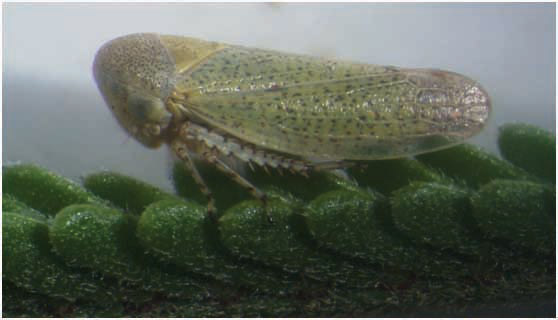
Macropsine species (undetermined)
– belongs to possible new genus –
collected by sweeping Acacia mearnsii
DPI Knoxfield, Victoria. Photo taken by: Linda Semeraro.
STUDENT
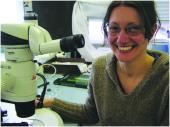
Linda Semeraro
Student CRC60138: Systematics of Australian Macropsine Leafhoppers - PhD
Linda.Semeraro@dpi.vic.gov.au
Phone: (03) 9210 9329
Read More
PROJECT DETAILS
Active
Supervisor
Professor Tim New, Dr Fiona Bird (LaTrobe University), Dr Murray Fletcher, Dr Andrew Mitchell (NSWDPI) and Dr Mali Malipatil (DPI Victoria)
Supervising Institution
LaTrobe University
Term
March 2009 – April 2010
LOCATION
This project contributes to the strategic direction of the Cooperative Research Centre for National Plant Biosecurity (CRCNPB) by undertaking research that seeks to fill critical gaps in the knowledge of the ecology and epidemiology of emergency plant pests that underpins decision making in biosecurity. It will help increase the level of preparedness for potential emergency plant pest incursions, by providing a PhD graduate trained in aspects of biosecurity.
What is the biosecurity problem?
The high cost of surveillance and uncertainty that surrounds the establishment of containment zones.
The main outputs of this project are to?
-
determine the role host distribution plays in incidence and spread and compare lettuce aphid to other species to determine whether there is a generic basis to dispersal
-
quantify the seasonal flight patterns and contrast with what is known for other aphid species in Australia
-
estimate the probability and extent of inter-host movement and compare lettuce aphid to other species to determine whether there are generic rules
-
write a suite of papers that contribute to the literature in the area of landscape ecological processes, and
-
deliver a PhD graduate with skills in quantifying and predicting dispersal patterns of small insects.
Who will be the end-users of your research?
End users will be biosecurity agencies, Plant Health Australia (PHA), universities, government agencies and crop consultants.

Craig Feutrill (in purple shirt) demonstrating the mobile eight metre suction trap to the entomology group at Waite campus, University of Adelaide.
STUDENT
PROJECT DETAILS
Active
Supervisor
Dr Mike Keller (University of Adelaide), Dr Sandra McDougall and Dr Jianhua Mo (Industry & Investment NSW)
Supervising Institution
University of Adelaide
Term
April 2007 – October 2010
LOCATION
The major aim of this research is to develop a multiplexed nanosensor assay for known viral pathogens of banana. The project will investigate the potential of a recombinant antibody array to detect virus particles. It is hoped that great efficiencies in virus diagnostics could be achieved if all assays could be done simultaneously using a single diagnostic platform.
What is the biosecurity problem?
Bananas are considered the most important fruit crop in developing countries and are the world's most exported fresh fruit in terms of volume and value. By world standards, Australia is a relatively small producer of bananas, however over 20.4 million thirteen kilogram cartons of bananas with an estimated wholesale value of AU$320,350 million are grown per annum, making it one of the most lucrative of the country's horticultural industries.
Cavendish, the mainstay of the Australian banana industry is susceptible to at least twenty different virus species, including Banana bunchy top virus (BBTV), Abacá bunchy top virus, Banana bract mosaic virus, the Abacá strain of Sugarcane mosaic virus (SCMV), Cucumber mosaic virus (CCMV) and upwards of fifteen different badnaviruses, any of which could devastate the industry if introduced.
Although good diagnostic assays are available for some of the banana viruses such as CMV, BBTV and SCMV detection of the badnaviruses causing banana streak disease is still very problematic. This is due to their great sequence diversity and also the integration of some badnavirus species DNA of in the genome of the banana plant. Standard polymerase chain reaction diagnostics using nucleic acid as a template are incapable of discriminating integrated from episomal (actively replicating) badnavirus DNA and therefore cannot be used for routine virus indexing work as part of clean planting material schemes.
The outputs of this project are to:
- contribute to a better understanding of virus particle structure and the distribution and variability of epitopes, leading to more robust serological techniques
- provide new, cheaper antibody array technologies with better orientation of antibodies on the solid phase and less non-specific binding of proteins
- provide a model system for the use of nanosensors to detect all types of protein markers, not only those associated with plant viruses but also animal viruses and even cancers, and
- train a PhD graduate trained in molecular detection technologies for plant pathogens.
Who will be the end-users of your research?
- Australian Quarantine and Inspection Service
- State and Territory Department of Primary Industries
- Australian banana industry
- Diagnostic laboratories, and
- Nanomics BioSystems Pty Ltd.
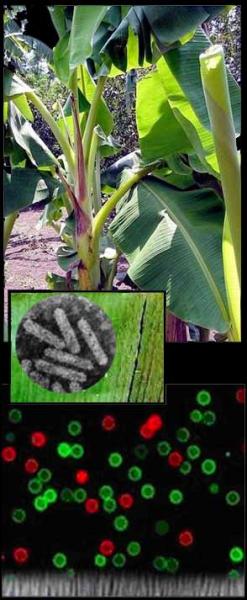
STUDENT
PROJECT DETAILS
Active
Supervisor
Dr Andrew Geering (QDPI&F), Dr Bronwyn Battersby (AIBN- UQ), Dr Hans Heines (CSIRO) and Dr Paul Campell (QDPI&F)
Supervising Institution
University of Queensland
Term
May 2008 – May 2011
LOCATION
The aim of this project is to experimentally determine and mathematically model the movement of phosphine fumigant in large grain storages and its associated efficacy. This information will then be used to actively improve fumigant application to achieve effective insect and selection for resistance avoided.
What is the biosecurity problem?
The continued usefulness of phosphine to control insect infestations while avoiding selection for resistance is threatened by the inability to ensure effective distribution of fumigant.
The main outputs of this project are to:
- monitor and map phosphine gas distribution within large grain storages and relate this to causative factors
- develop mathematical simulation models describing fumigant distribution within large grain storages including "peripheral layer" problem areas
- develop mathematical simulation models of insect mortality and resistance selection under typical industrial phosphine doses, and
- use this information to recommend and trial solutions to gas distribution problems in large grain storages.
Who will be the end-users of this research?
Results from this project will benefit the Australian grain industry, in particular the bulk handling companies, grain fumigation researchers and grain fumigation designers of grain storage.
PROJECT LEADER
Mr Greg Hopkins
Project Leader CRC50091: Ensuring Effective Phosphine Application
greg.hopkins@viterra.com
Phone: 08 8304 5109
Fax: 08 8212 8392
Read More
PROJECT DETAILS
Active
Term
January 2009 – December 2011
Budget
$3,439,249 (cash and in-kind support)
PROGRAM DETAILS
CORE CRC PARTICIPANTS
SUPPORTING CRC PARTICIPANTS
Flies belonging to the Oriental Fruit Fly species complex, Bactrocera dorsalis, include a number of serious horticultural pest species which are difficult to identify (i.e. B. dorsalis s.s., B. papayae, B. carambolae & B. philippinensis). This project will undertake a comprehensive biological, morphological and molecular study of the complex, to confirm species boundaries and develop new diagnostic methods for their detection.
What is the biosecurity problem?
Tropical fruit flies of the genus Bactrocera are among the most threatening invaders of Australian horticulture, and pest fruit flies of the B. dorsalis species complex dominate Northern Australia Quarantine Strategy, The Australian Quarantine and Inspection Service and industry target lists. Three species within the complex (B. dorsalis s.s., B. papayae and B. philippinensis) are category two pests in the Deed. Unfortunately, despite their importance, these species cannot be adequately resolved from each other, nor from endemic, non-regulated fruit fly species.
The main outputs of this project are to:
- resolve species limits by seeking a consensus result from different tests (morphological, molecular, mating, and host use studies)
- ensure congruency between molecular and morphologically defined taxa within the complex, and
- develop robust molecular diagnostics for the species.
Who will be the end-users of this research?
End-users in Australia will include diagnostic laboratories associated with quarantine and plant health authorities. In addition, once international protocols are established, the test will be available for use by other countries. Benefits will flow on to the Australian and New Zealand horticultural industries.
PROJECT LEADER
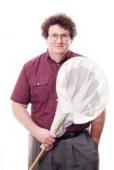
Dr Anthony Clarke
Project Leader CRC20115: Resolving the Bactrocera dorsalis Complex
a.clarke@qut.edu.au
Phone: 07 3138 5023
Read More
PROJECT DETAILS
Active
Term
April 2009 – April 2012
Budget
$765,000
PROGRAM DETAILS
LOCATION
CORE CRC PARTICIPANTS
SUPPORTING CRC PARTICIPANTS
CONTRIBUTORS
This project will aim to investigate and model the role of different host plants and sources of those plants (e.g. commercial versus domestic) in the regional population dynamics of Q-fly as an aid to developing area-wide management as a pre-harvest market-access tool.
What is the biosecurity problem?
Fruit flies represent the single most significant phytosanitary barrier for domestic and international market access for most fruit and some vegetable commodities. Many horticultural industries in Australia which produce fruit fly host commodities need enhanced export opportunities to remain viable. Export markets and some domestic markets frequently require that rigid phytosanitary protocols must be implemented to guarantee that commodities are free from fruit fly. Australian commodity producers and exporters already work within an environment where we have a number of key domestic fruit fly pest species (especially Bactrocera tryoni, a.k.a Queensland fruit fly or Q-fly), but the situation could, at any time, become significantly worse with 47 exotic fruit fly species listed in industry biosecurity plans.
The main outputs of this project are to:
- help substantially to increase our knowledge of the interactions between individual frugivores (in this case fruit flies) and the impact this has on emergent properties, such as population size
- develop experimental and theoretical links between autecology (the ecology of individuals) and population ecology, and
- impact on management recommendations for fruit flies, particularly with respect to managing non-crop sources of fruit flies, including post-picking fruit, feral fruit and native fruit.
Who will be the end-users of this research?
The end users will be field based fruit fly researchers who advise local consultants and growers. Information will also be incorporated into the outputs of larger CRCNPB fruit fly projects.
STUDENT
PROJECT DETAILS
Active
Supervisor
Assoc. Prof Anthony R Clarke and Dr Raghu Sathyamurthy (Queensland University of Technology)
Term
August 2008 - August 2011


